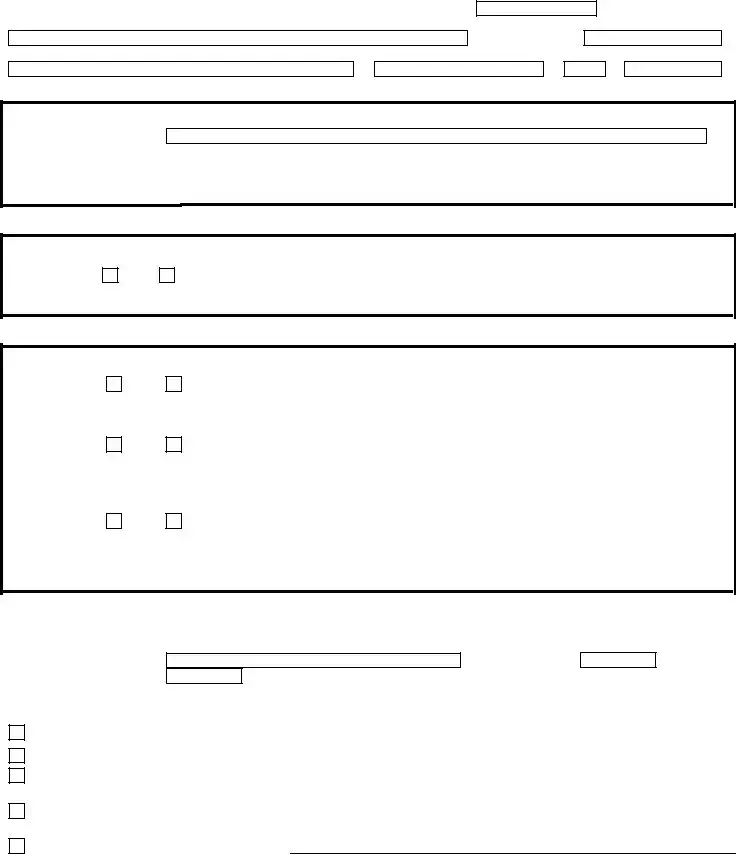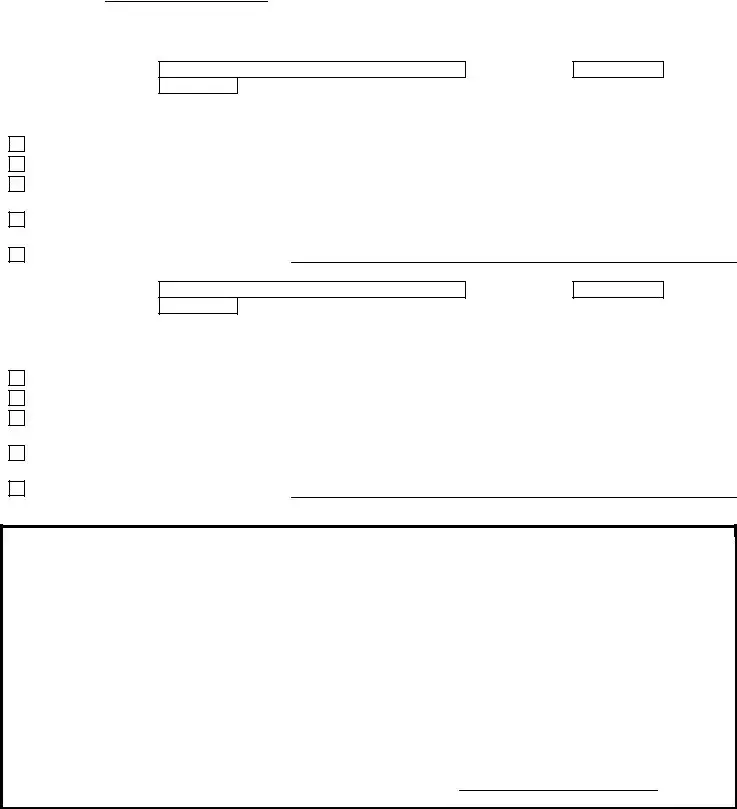The ACORD 125 Commercial Insurance Application is similar to the NYSID 41C W form in that both are used in the insurance application process, but for different purposes. The ACORD 125 gathers broad information about the applicant's business operations and risk exposures, providing insurers with the necessary details to underwrite commercial insurance policies. Like the NYSID form, it’s an essential step in obtaining coverage, but focuses more on collecting general business information rather than the specifics of insurance placement practices and declination records.
The Surplus Lines Affidavit shares similarities with the NYSID 41C W form as it is used in the context of surplus lines insurance, which is insurance placed with non-admitted insurers when coverage cannot be found within the admitted market. Both documents involve affirmations related to the search for coverage and compliance with specific regulatory requirements, but the Surplus Lines Affidavit specifically focuses on the acknowledgment and acceptance of obtaining insurance from a surplus lines insurer.
Excess Line Association of New York (ELANY) Financial Statement Filings are required for excess line brokers in New York, similar to the NYSID 41C W form which is also a regulatory document for brokers dealing with excess line insurance. While the NYSID form documents efforts to place a risk and affirmations of compliance with regulatory requirements, the ELANY Financial Statement Filings focus on the financial aspects of the broker's operations, ensuring financial stability and compliance with surplus lines tax obligations.
Notice of Excess Line Placement (NELP/2011) is mentioned within the NYSID 41C W form and serves a complementary purpose. The NELP is a document that brokers are required to provide to insureds, notifying them that their coverage is being placed with an excess or surplus lines insurer. This document is directly linked to the practices documented in the NYSID form, underscoring the broker’s duty to inform the insured about the nature of their coverage placement.
The Certificate of Insurance is similar to the NYSID 41C W form in its function to provide evidence of insurance coverage but is distinct in its application and audience. While the NYSID form is an internal document used between brokers and regulators to affirm certain brokerage activities, a Certificate of Insurance is issued to the insured or interested third parties as proof of insurance coverage in place, detailing the terms and limits of the policy.
Insurance Binder similarly serves as temporary evidence of insurance coverage before the issuance of a formal policy, much like the NYSID 41C W form which involves documenting efforts to secure coverage. However, the binder is a contract that provides immediate insurance protection for a specified period, offering temporary coverage while the insurance underwriting process is completed.
The Declaration Page is part of an insurance policy that summarizes key information regarding the coverage, similar to how the NYSID 41C W form summarizes efforts to place coverage. Although serving different stages in the insurance process, both documents detail specific information about the insurance arrangement, such as the parties involved, types of coverage, and limits.
Policy Endorsements, which modify the terms of an insurance policy after it has been issued, can be related to the NYSID 41C W form in the sense both involve documentation that alters or affirms insurance coverage details. The NYSID form, however, is more about regulatory compliance in the placement process, whereas endorsements adjust the policy terms themselves.
The Risk Management Plan is a comprehensive document that identifies potential risks to a business and outlines strategies to mitigate these risks, sharing a preventative nature with the NYSID 41C W form. While the Risk Management Plan is broad and focused on overall business strategies, the NYSID form specifically deals with the brokerage aspect, ensuring that insurance placement activities adhere to regulatory standards.
Last, the Loss Run Report, which provides a history of claims on an insurance policy, has an indirect relation to the NYSID 41C W form through its use in the insurance underwriting process. Both documents provide insurers with crucial information needed to evaluate risk and make informed decisions — the NYSID form from a regulatory compliance standpoint, and the Loss Run Report from a claims history perspective.

